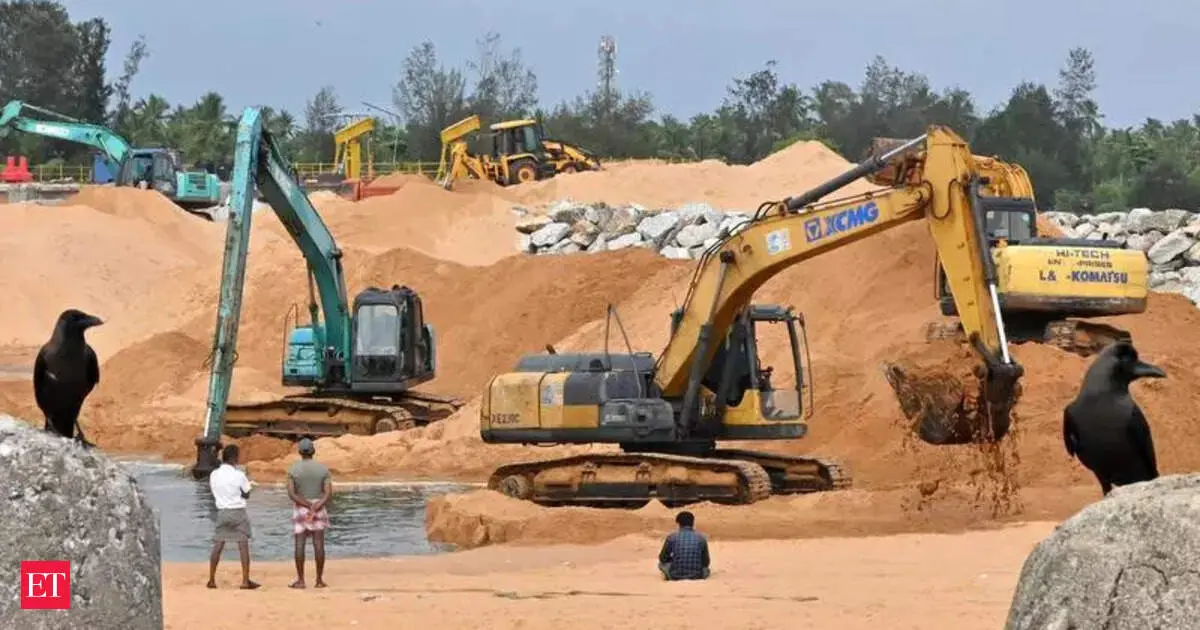New Delhi: The Indian government is preparing an incentive program worth Rs 14,000-16,000 crore to promote local manufacturing of essential construction equipment. This initiative aims to reduce the country’s reliance on imported machinery as it addresses infrastructure challenges and boosts the Indian economy. Officials hope that this plan, currently under inter-ministerial consultations, will be operational by the next fiscal year, changing the landscape of construction in India.
Government Incentives to Boost Local Manufacturing
The Indian government is launching an ambitious scheme designed to plug the considerable gap in the domestic manufacturing of construction equipment. As India strives to enhance its infrastructure and ease logistical bottlenecks, this Rs 14,000-16,000 crore incentive initiative is poised to play a significant role. Currently, India heavily relies on imports for nearly half of its mining and construction equipment components, with major suppliers including China, Japan, and South Korea.
Senior officials have indicated that inter-ministerial discussions are already underway, and they anticipate this program to become operational in the upcoming fiscal year. “A scheme to incentivise local manufacturing is much needed towards strengthening India’s construction and mining equipment ecosystem,” said Manish Mathur, CEO of ACE. The aim is not only to reduce dependence on foreign equipment but also to foster local innovation in manufacturing.
Addressing Supply Chain Challenges
Heavy reliance on imported machinery often leads to complications in efficient project execution. Rahul Agarwal, CFO of Patel Engineering Ltd, voiced concerns regarding supply chain vulnerabilities, stating: “This reliance can at times create tight supply conditions, especially when international demand is high or global supply chains face disruptions.” Such delays can derail time-sensitive projects, compelling construction firms to employ inventive strategies like optimizing existing equipment use and forming closer partnerships with vendors.
Despite these challenges, experts suggest that the introduction of local manufacturing capabilities could significantly enhance project sustainability. By diversifying the domestic supply chain, these strategies will help shield projects from international price swings and supply uncertainties.
Potential for Localisation and Economic Savings
A recent ICRA report highlights a stark difference in indigenisation levels across various construction equipment categories. The report forecasts that India’s mining and construction industry could see localisation levels soar to 70-80% within the next few years, compared to less than half currently. This increase could unlock a revenue potential of approximately $25 billion annually, translating into $3 billion in foreign exchange savings.
Here’s a summary of key facts regarding the potential benefits of local manufacturing:
| Metric | Current Level | Projected Level (5-7 Years) |
|---|---|---|
| Localisation in Mining/Construction Equipment | Less than 50% | 70-80% |
| Annual Revenue from Local Manufacturing | N/A | $25 Billion |
| Foreign Exchange Savings Annually | N/A | $3 Billion |
The anticipated push for large infrastructure projects like metros and bullet train corridors willheighten the demand for essential machinery such as tunnel boring machines and large cranes, presently sourced from abroad.
Future-Proofing Infrastructure Development
“Better project planning is crucial,” Agarwal noted, emphasizing the importance of building a robust domestic equipment base to mitigate the risks associated with global supply chains. Industry associations have even proposed establishing a dedicated Production-Linked Incentive (PLI) scheme for the heavy construction sector, similar to the successful initiatives seen in electronics and automobiles.
As India gears up for ambitious projects aimed at expanding its port capacity and transportation networks, the role of locally manufactured equipment becomes increasingly significant. The government plans to quadruple port capacity to 10,000 million tonnes per annum by 2047 and develop high-speed road corridors stretching over 50,000 kilometers by 2037. Moreover, Dilli’s metro system is set to expand fivefold to 5,000 kilometers, marking a strategic advancement in urban mobility.
In summary, the concerted effort by the Indian government to incentivize local manufacturing in key construction equipment marks a pivotal shift in the nation’s infrastructure development strategy. As the country aims for self-reliance and economic growth, integrating local capabilities will not only bolster the construction sector but strengthen overall economic stability. Experts urge the government to maintain its momentum in facilitating a system that promotes local innovation and industry, driving long-term benefits for the Indian economy.
Bankerpedia’s Insight 💡
The Indian government’s initiative to incentivize local manufacturing of construction equipment signals a significant shift in the banking and finance sector, promoting self-reliance and reducing import dependency. This move has the potential to stimulate job creation and enhance the resilience of supply chains, especially given ongoing global disruptions. As the domestic equipment market is projected to grow substantially, financial institutions should assess lending opportunities within this sector. For individuals, staying informed on local manufacturing developments could present investment opportunities in emerging industries.
What Does This Mean for Me? 🤔
- Salaried Person → Increased job opportunities in construction and manufacturing sectors.
- Business Owner → Increased local manufacturing may reduce costs and delays.
- Student → More job opportunities in construction and engineering sectors.
- Self-employed → Potential cost savings and easier equipment access ahead.
- Homemaker → Increased availability of affordable construction materials and services.
- Retiree / Senior Citizen → Potentially improved infrastructure and services for seniors.
- Job Seeker → Increased demand for jobs in construction equipment manufacturing.
- Farmer / Rural Citizen → Increased availability of affordable construction equipment for farmers.
Research References 📚
- economictimes.indiatimes.com
- RBI
- SEBI
- Ministry of Finance
- NABARD
- Department of Financial Services (DFS)
- IMF
- World Bank
Loved our Research? ❤️
Bankerpedia turns financial confusion into clarity!
Subscribe to our YouTube channel for unbiased insights, financial literacy & practical banking wisdom.









